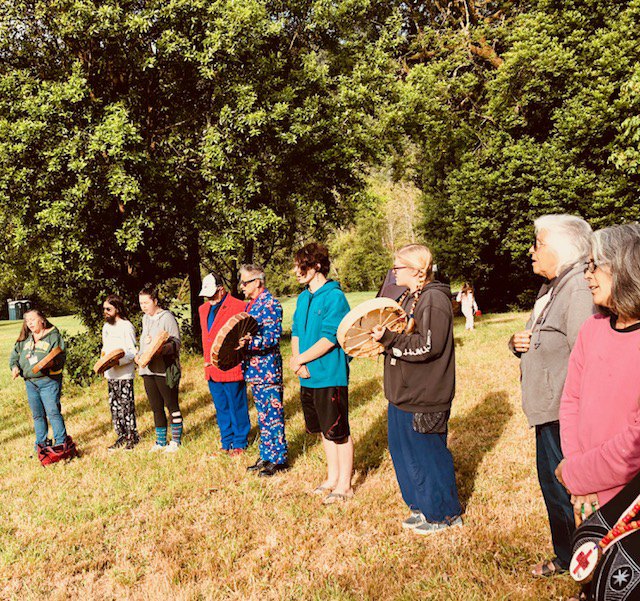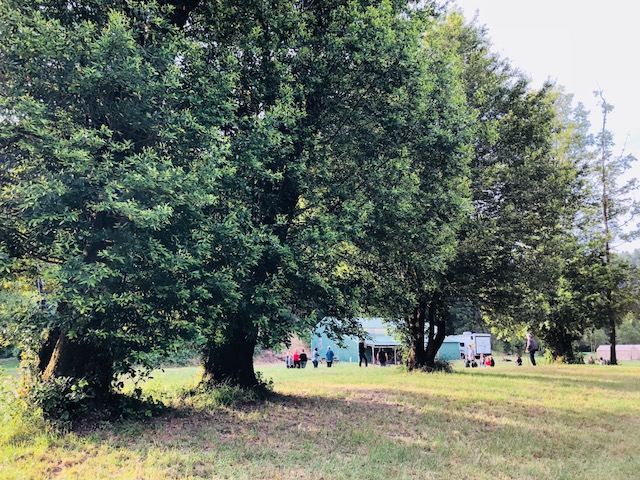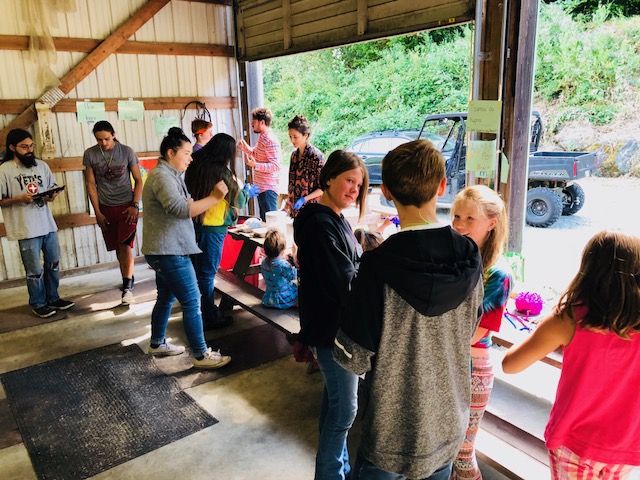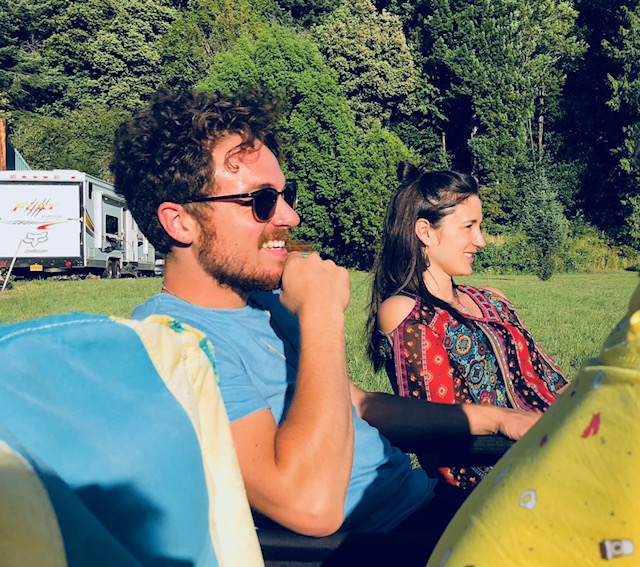Post by Jacob Schoen, OHSU Oregon National Primate Research Center
“Man was the storytelling animal, the only creature on earth that told itself stories to understand what kind of creature it was. The story was his birthright, and nobody could take it away.” –Salman Rushdie

Only humans..?
One message that Nama (Siletz storyteller Esther Stutzman) taught her camp children around the fire was the power of their own imagination. When we watch a movie, what is shown to us is already mapped out. The story unfolds, and is illustrated in a way that forces us to see exactly what the creators want us to see. We know that Shrek the ogre is green, and the Little Mermaid has red hair…

In contrast, when we listen to a story through spoken word we are free to come up with all the remarkable perceptual details ourselves through our own imagination. Nama emphasized this by asking the children about what they remembered from the stories she had previously told…

The features of each character, what they looked like and what they wore, differed from child to child, and these personal details of a story had the power to completely change what it looked like for each person. Was the bird yellow? Was it big or small? How was that animal captured? What did the magic look like?

There was a kind of magic in the myrtlewood trees that surrounded us along the river bed, and in the rhythmic power of the drums. Not a “Harry Potter” kind of magic, as Nama (Esther Stutzman) would say, but a different kind of magic. A kind of magic that centrally incorporates nature. Fellow animals, trees, and our own human existence share growth though change, life, memories, loss and death.

“What does this neuron look like,” I asked. “A tree!”
In the daily tasks of camp there were no hard-set schedules, inflexible deadlines, or static instruction. However, there was a natural organization and flow, going from language class to the drum circle, and from the drum circle to the camp fire for stories. When elders spoke, the children listened, and not seemingly out of obligation, but out of what felt like a sincere desire to learn, respect – and have a little fun. The trickster (in all of us) was present there too!

“I made a Deadpool neuron…”
Excitement filled the camp as young campers came up to us volunteers after learning about what we do in neuroscience, and how we got here. One child asked, “What is consciousness?” From another: “Why do I get so angry?”

LEARN MORE: Consciousness: here, there and everywhere?
LEARN MORE: The Status and Future of Consciousness Research
LEARN MORE: What happens when we get angry? Hormonal, cardiovascular and asymmetrical brain responses
It is one of the most natural human curiosities to ask why we feel and “think,” what the world is, what it’s made of, and how things really work. The neuroscientific investigation of consciousness and emotional regulation makes for inherently compelling stories – and we also benefit from insights, imagination and observed truths derived from more ancient, enduring tales.

A haze from a fire in nearby Lobster Creek blanketed the daytime, but as night took over, I watched a light show unfold. Myrtlewood shops were sprinkled along this rugged coast, filled with carvings made from a valued tree, which has long been used for its medicinal properties among Native peoples. I slept under myrtlewood my first night at camp. Some claim that there are more synapses (connections) in our brains than stars in the observable universe – but the reality is even more incredible! Yet as Carl Sagan noted, we are the stuff of stars. Stars and trees above, and within. As I fell asleep I sensed a connection to everything around me.

LEARN MORE: Siletz Stories, Singing, Dancing & Brains!




